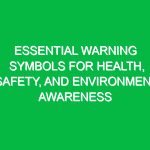# Essential Gasoline Safety Tips: Protecting Your Team in the Workplace
Welcome, team! Today, we are here to talk about a crucial aspect of our daily operations – Gasoline Safety. Ensuring the safety of our team members is paramount, and understanding the best practices when handling gasoline is essential to prevent accidents and promote a safe working environment. Let’s delve into some essential gasoline safety tips that will protect you and your colleagues in the workplace.
## Understanding Gasoline Safety
Gasoline, a flammable liquid commonly used in various industries, poses significant risks if not handled properly. From fire hazards to health risks, it is crucial to be aware of the potential dangers associated with gasoline and how to mitigate them effectively. Gasoline Safety falls under the Health, Safety, and Environment (HSE) domain, emphasizing the importance of following specific guidelines to prevent accidents and injuries.
## Potential Hazards and Risks
When working with gasoline, it is essential to recognize the potential hazards and risks involved. These may include fire and explosion risks, inhalation of toxic fumes, skin irritation upon contact, and environmental pollution. By understanding these risks, we can implement preventive measures to minimize the likelihood of accidents and ensure the safety of our team members.
## Best Practices for Gasoline Safety
To promote a safe working environment, it is crucial to adhere to best practices for gasoline safety. Here are some essential tips to keep in mind:
– **Proper Storage:** Store gasoline in approved containers away from ignition sources and in well-ventilated areas.
– **Handling Procedures:** Wear appropriate personal protective equipment, such as gloves and goggles, when handling gasoline.
– **Spill Response:** In case of a spill, follow proper cleanup procedures to prevent environmental contamination.
– **Ventilation:** Ensure adequate ventilation in areas where gasoline is stored or used to reduce the risk of inhalation exposure.
– **No Smoking Policy:** Strictly enforce a no smoking policy in areas where gasoline is present to prevent fire hazards.
## Real-Life Examples
Let’s consider a real-life scenario where understanding gasoline safety protocols is crucial. Imagine a team member accidentally spills gasoline while refueling a vehicle. Without proper knowledge of spill response procedures, the situation could escalate, leading to environmental damage and potential health risks. By being informed and prepared, our team can effectively address such incidents and prevent further harm.
## Compliance and Regulations
Compliance with regulations and standards related to gasoline safety is vital to ensure a safe working environment. By following industry guidelines and company policies, we not only protect ourselves and our colleagues but also fulfill legal obligations regarding safety in the workplace. It is essential to stay informed about relevant regulations and incorporate them into our daily practices.
## Conclusion
In conclusion, Gasoline Safety is a critical aspect of our daily operations that should not be overlooked. By understanding the potential hazards, implementing best practices, and staying compliant with regulations, we can protect our team members and maintain a safe working environment. Remember, safety is everyone’s responsibility, and by prioritizing gasoline safety, we contribute to a culture of safety and well-being in our workplace. Thank you for your attention and commitment to safety. Stay safe, team!
Remember, practicing gasoline safety is not just a requirement but a responsibility we owe to ourselves and our colleagues. Let’s prioritize safety in all our tasks and ensure a secure workplace for everyone. Thank you for your attention, and let’s continue to work together to maintain a safe and healthy environment for all.


